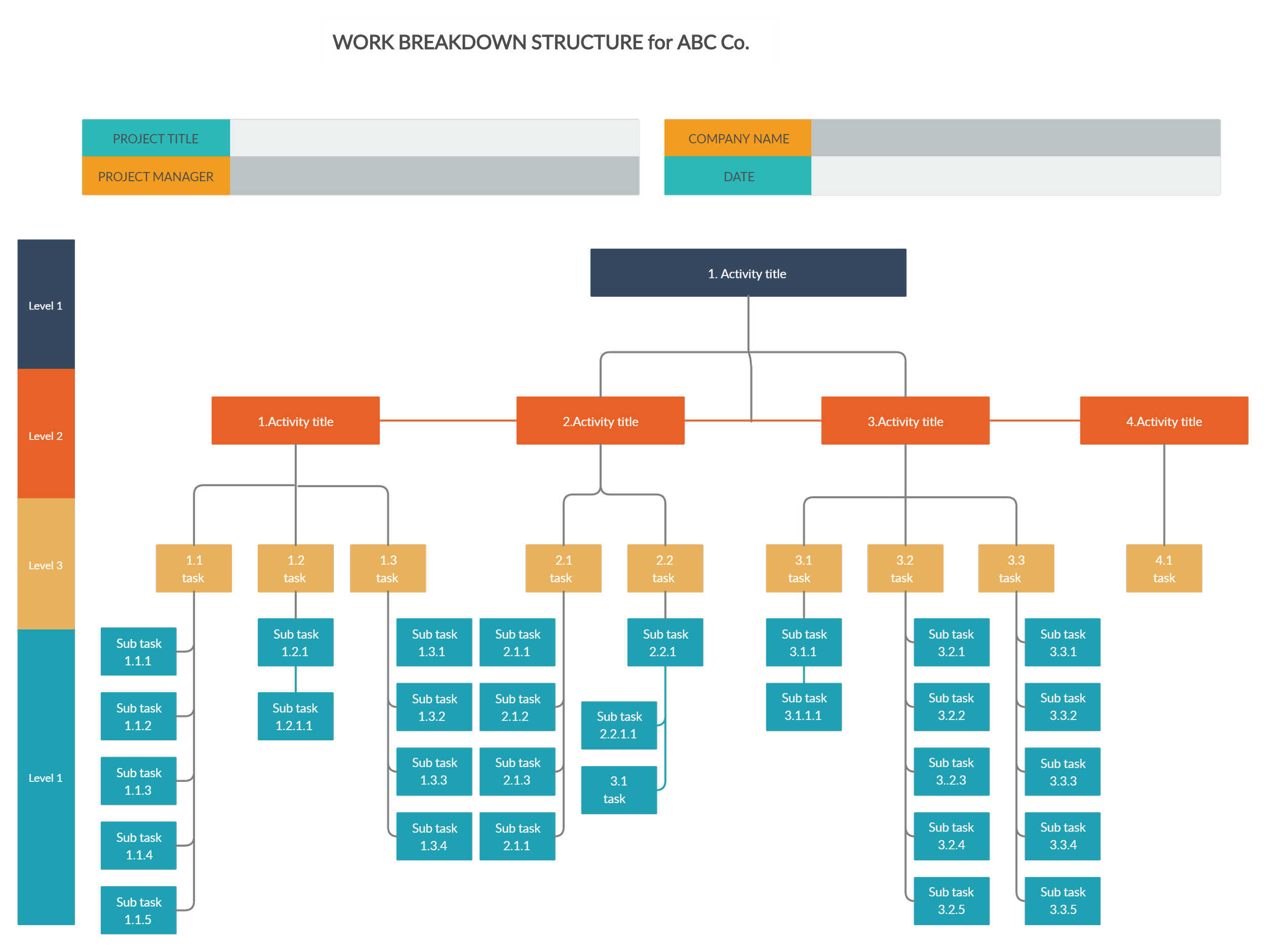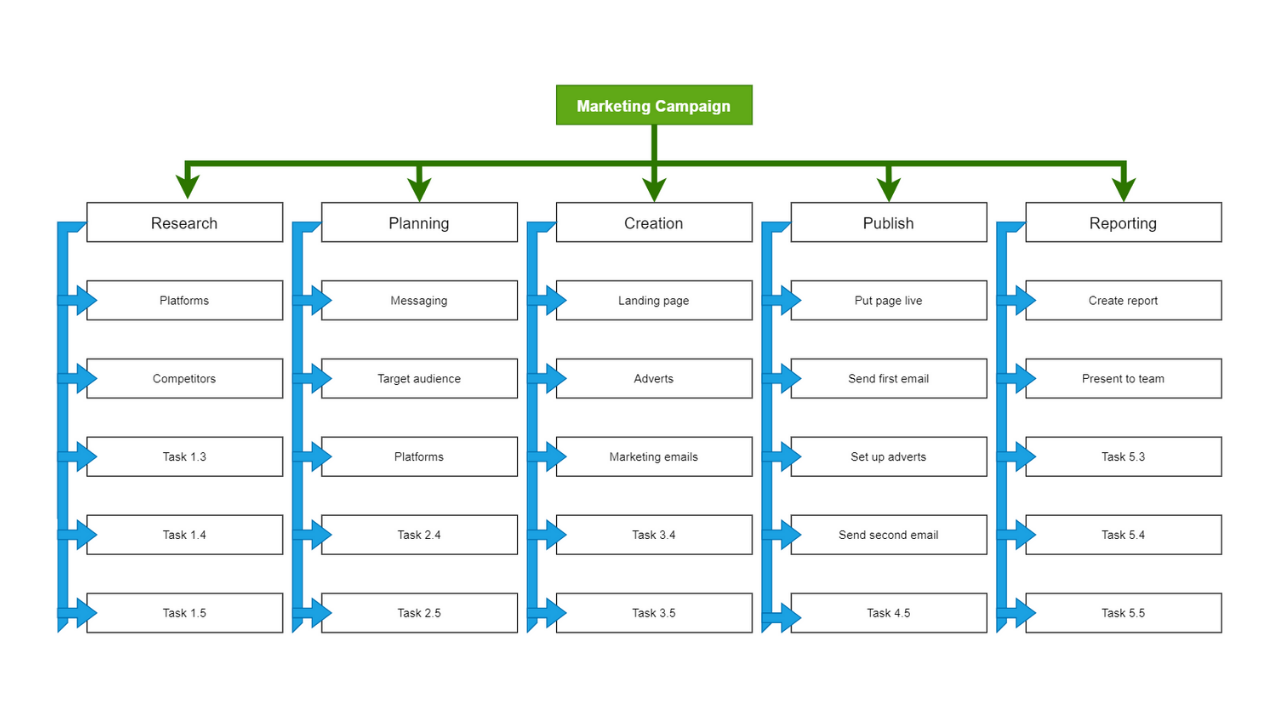The Work Breakdown Structure: Make Your Project Planning Easier and More Effective
Do you need better project management that results in fewer delays and a smoother workflow? If so, then you should explore the power of using a work breakdown structure (WBS) for your next initiative. A WBS allows you to break down tasks into component parts, think of building blocks, so that each element has its own timeframe and dedicated resources. By clearly defining the scope of any given project or assignment, this technique can help ensure that adequate time is allowed for planning, scheduling, executing tasks, monitoring progress and completing quality assurance testing. Additionally, it helps make certain everyone remains focused on their individual objectives while also keeping track of collective goals. Ready to learn more about how a work breakdown structure could improve your project planning process? Let’s dive in!
The work breakdown structure and its benefits
A work breakdown structure, or WBS, is a visual representation of the tasks that need to be completed in order to achieve a desired outcome. It's often used in project management, and it can be really helpful in ensuring that all tasks are accounted for and that there is a clear plan for completing them.
The benefits of using a work breakdown structure include:
1. Ensuring that all tasks are accounted for.
2. Helps to identify dependencies between tasks.
3. Facilitates estimating the time required to complete tasks.
4. Helps to track progress and identify any potential problems.
How to create a WBS
A WBS, or Work Breakdown Structure, is a great way to organize and plan your project. It can be used at any stage of the project, from planning to execution. The WBS breaks the project down into manageable parts, so that you can track and manage each individual task.
To create a WBS, you first need to define the project goals and objectives. Then, you can break down each goal into smaller tasks. You can further subdivide these tasks into even smaller tasks, if necessary. The key is to break the project down into small enough tasks that you can easily track and manage them.
The WBS can be a great tool for organizing and planning your project. It can help you stay on track and ensure that all of the tasks are completed correctly and on time.
Tools to create a Work Breakdown Structure
Just about all of the popular project management tools offer a pre-built WBS you can use to create a work plan. My favorite tool that has a WBS template is Mural, but I can offer be found creating one in Microsoft Excel or Google Sheets.
An example of a Work Breakdown Structure
Below is an image of what a WBS might look like for a marketing team.
The importance of a WBS in project planning
A Work Breakdown Structure (WBS) is an important tool in project planning. It is a graphical representation of the work that needs to be done to complete a project. It helps to break down the project into smaller, more manageable tasks. This makes it easier to track the progress of the project and identify any potential problems. The WBS can also be used to create a schedule and budget for the project.
Tips for effectively using a WBS
A WBS, or Work Breakdown Structure, is a key part of effective project management. It can be used to help plan, organize, and manage a project by breaking it down into smaller, more manageable tasks. By creating a WBS, you can ensure that all aspects of the project are accounted for and that each task is assigned to the right person.
There are a few key things to keep in mind when using a WBS:
1. Make sure the tasks are broken down into small enough chunks that they can be completed in a reasonable amount of time.
2. Assign each task to the right person.
3. Make sure the tasks are properly sequenced so that they can be completed in the correct order.
4. Keep track of the progress of each task and make sure it is moving along as planned.
5. Revise the WBS as needed throughout the course of the project.
The WBS can be a valuable tool for ensuring that your project stays on track and is completed on time and on budget.
Key takeaways
By understanding and utilizing a work breakdown structure in your project planning, you can create more realistic estimates, avoid scope creep, better delegate tasks to team members, and improve communication with clients or executive sponsors. While employing a WBS takes some time and effort upfront, the benefits far outweigh any costs.

